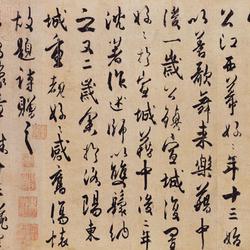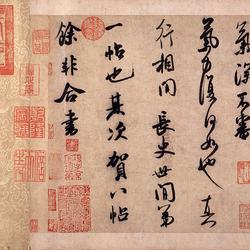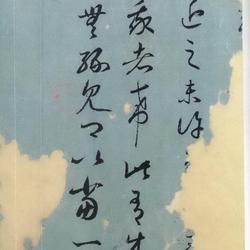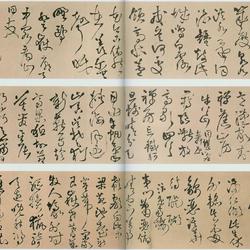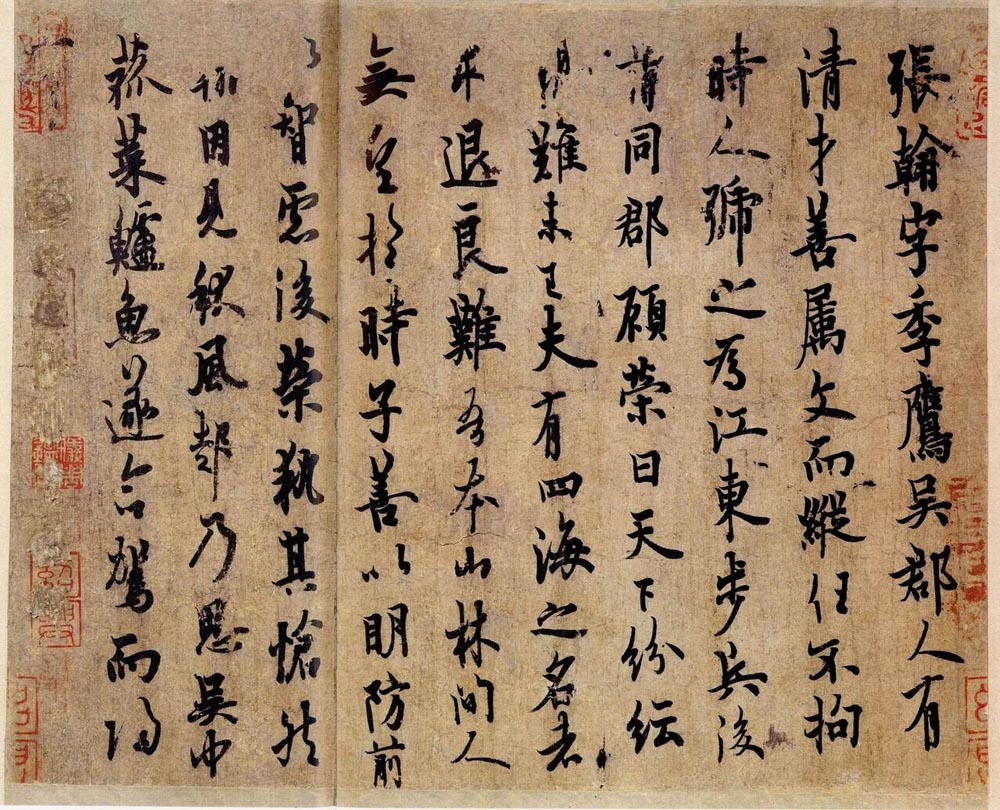
"Zhang Han Tie", also known as Ji Ying Tie, records the story of Zhang Han. Explanation: "Zhang Han, courtesy name Ji Ying, was from Wujun. He was talented, good at writing, and allowed himself to be given free rein. At that time, he was called Jiangdong Infantry. Later, he was called Gu Rong of the same county and said: The world is in chaos, and disasters are endless. Husband has Those who have the name of the Four Seas seek to retreat from difficulties. I am a man in the mountains and forests, and I have no hope of time. I am good at guarding against the front and thinking about the rear with wisdom. Rong Zhiqi (the word "hand" is missing) is sad, and Han sees the autumn wind blowing. , I was thinking of wild vegetables and seabass in Wuzhong, so I ordered to drive back." (The words in the box are broken, now supplemented according to "Book of Jin") This text can be found in "Book of Jin·Wenyuan" and "Shishuoxinyu" and other books, but All are excerpts. Zhang Han was a native of Wu County (now Suzhou) in the Western Jin Dynasty. He was rich in talent, free-spirited, open-minded and indulged in drinking. At that time, people called him Ruan Ji, one of the "Seven Sages of the Bamboo Grove" in the Wei Dynasty of the Three Kingdoms (Ruan Ji was an infantry school commander). Lieutenant, known as Ruan Infantry), called him "Jiangdong Infantry". He followed He Xun to Luoyang and became an official of the King of Qi, but he was not happy. He often missed his hometown in the south of the Yangtze River, so he thought of retreating to the mountains and forests to stay away from the troubled times. He eventually abandoned his official position and returned to his hometown. "Zhang Han Tie" originally belongs to "Historical Notes". It is one of the four extant ink writings by Ouyang Xun, a famous calligrapher in the Tang Dynasty. It is very precious. The calligraphy of this post is characterized by long and slender fonts, strong and straight strokes, sinister style, and exposed spirit. There is an inscription and postscript in a thin gold book on the opposite side, which is the experience written by Zhao Ji, Emperor Huizong of the Song Dynasty, after appreciating it. He commented on this post that "the writing style is dangerous and sharp, and the force is long-lasting", and pointed out that Ouyang Xun's "writing became more powerful in his later years, and he had the tendency to fight with law enforcement, and solitary peaks rose up and were cut from all sides." This comment is very important for our appreciation of "Zhang Xun" "Han Tie" and other European style books are extremely important. This painting and the inscription bear the seals of Zhao Gou, Emperor Gaozong of the Song Dynasty, and An Qi, a collector of the Qing Dynasty. It can be seen that this post was once stored in the Shaoxing Neifu of the Southern Song Dynasty. It was collected by Anqi in the Qing Dynasty and later entered the Qianlong Inner Palace. The original inscription by Hongli on the left side of the post was scratched off. This post is a Tang Dynasty calligraphy and painting version. The writing and ink are thick and the edge is slightly poor. There are records in books such as Bian Yongyu's "Shigutang Calligraphy and Painting Collection" in the Ming Dynasty, Wu Sheng's "Daguan Lu" in the Qing Dynasty, and An Qi's "Moyuan Huiguan".

